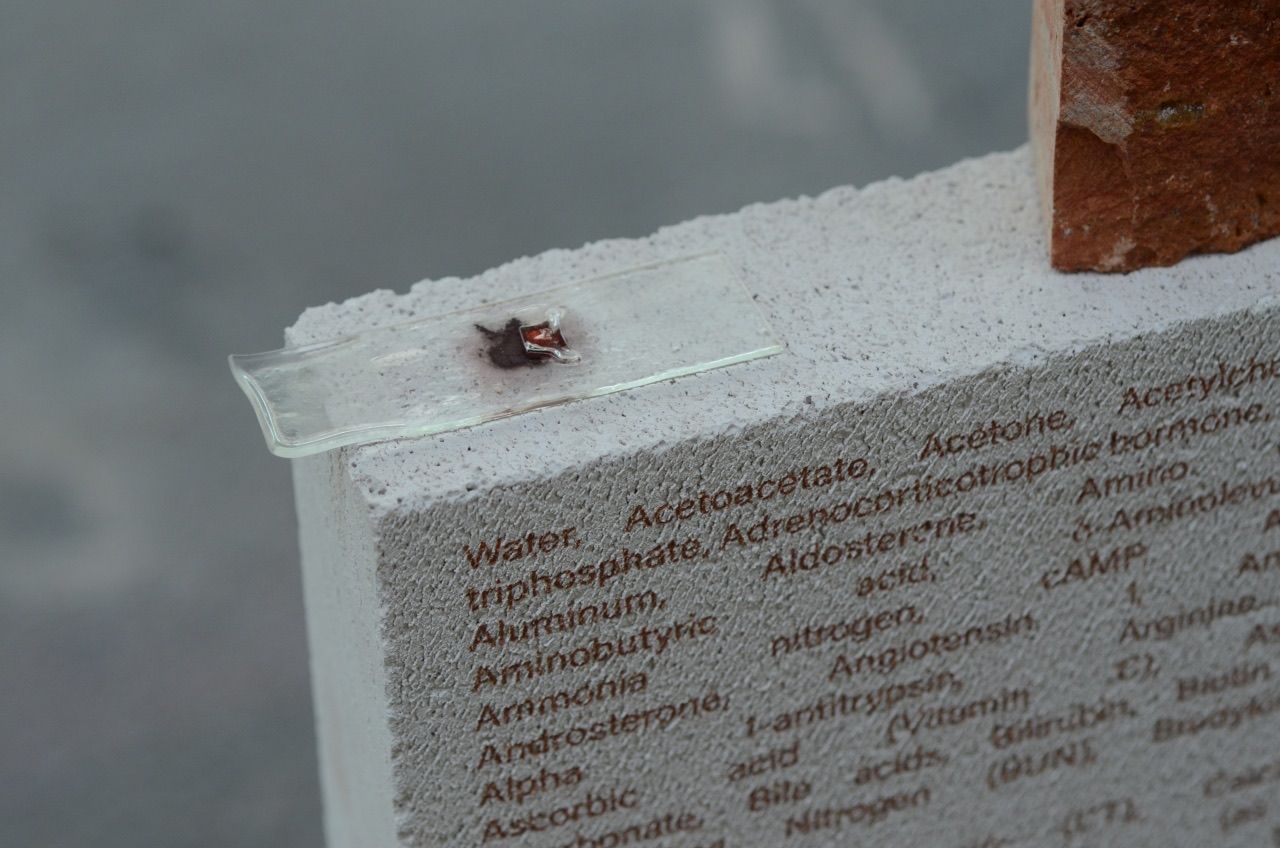This story is part of Next Generation, a series in which we give young makers a platform to showcase their work. Your work here? Get in touch: magazine@nextnature.net.
Hedwich Rooks defines herself as a Contemporary Alchemist, designer and artist who is based in The Hague. She graduated from Ecology Futures (MA), with a Masters at the Institute of Visual Cultures, St. Joost. Her graduate project 4 GRAMS OF IRON reflects on the compounds of blood as an extraterrestrial, non-human/more-than-human, deep-time entity. The project illustrates an intriguing biomaterial that holds countless narratives.
"There is nothing like it. It is stardust and the sea. The iron in our blood comes from the death of supernovas, like all iron on our planet. This bright red liquid … contains salt and water, like the sea we possibly came from."
Rooks current artistic expressions are mainly concerned with stretching concepts, extending bodies, digitizing matter and materializing data. Her research-based work commonly draws on biology and geology. Hedwich cross-pollinates living organisms, meta materials and both terrestrial and extraterrestrial phenomena in order to deal with ecological urgencies.

The principle of 4 GRAMS OF IRON came into being by unpacking the term metabolism in its most various sense. According to Rooks, our metabolism signifies that the materials or ingredients that our lives consist of, are constantly in a state of new dialogue. She aimed to translate this concept into a tangible form by (re)creating and applying these metabolic processes herself. "What I ran into, though, is that metabolism is a rather abstract concept in itself and it is had to be expressed in dialogue with a species-specific phenomenon." Hedwich explains.
"Blood is multilayered and sometimes holds a troubling reputation due to its unequal history of healthcare, bloodlines, races, gender and sexualities."
But it all fell into place for her when the designer came across a citation by Rose George: "There is nothing like it. It is stardust and the sea. The iron in our blood comes from the death of supernovas, like all iron on our planet. This bright red liquid … contains salt and water, like the sea we possibly came from." Blood, a material that she previously shuddered at, suddenly became an intriguing invitation to explore further in relation to metabolism as mediator. Though became a fascinating hyper-personal biomaterial to her, it took her quite a while to write about blood or work with the material due to its multilayered, sometimes troubling reputation and unequal history of healthcare, bloodlines, races, gender and sexualities.

Rooks collected the disassembled components of blood as tangible materials and filed them in a material passport resembling a periodic table. With no background in physics or chemistry, this anti-periodic table helped Rooks to educate herself about material properties such as formation and subsequent processes. By designing an anti-periodic table with no foreknowledge at all, it can actually reveal alternative, more experimental entry points in the design process. A perspective that, Hedwich thinks, is often neglected in current educational systems.

Rooks anti-periodic table allowed the designer to experiment with different combinations of using the collected components which resulted in a variety of creative manifestations. Her first setup on a larger scale consists of a 200-degree metal plate with porous ceramic sculptures on which various substances of seawater, iron and copper oxide drip.


Comments (0)
Share your thoughts and join the technology debate!
No comments yet
Be the first to share your thoughts!